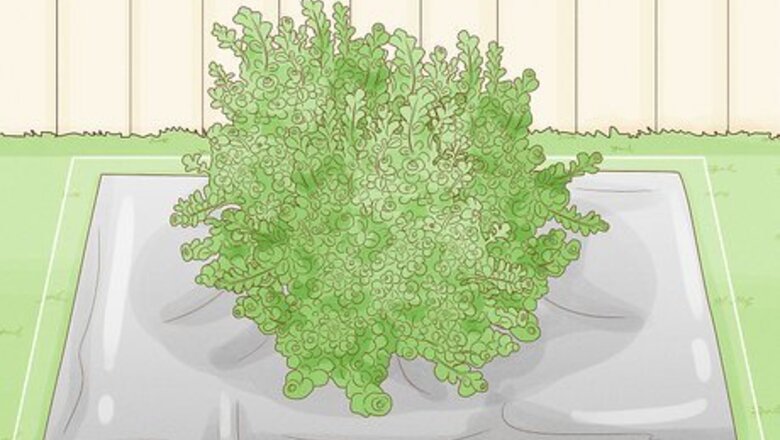
views
Here are 10 pro tips for cleaning up after trimming your hedges.
Lay a tarp under the hedges before pruning them.
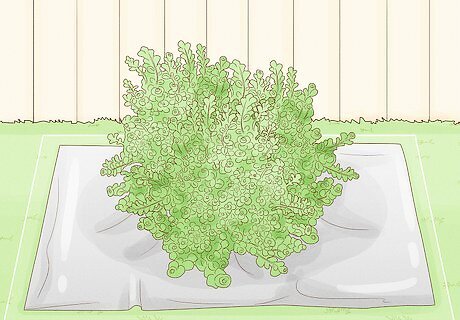
Tarps catch the falling debris as you trim and makes cleanup easier. Tuck the tarps as far under the hedges as you can in order to catch the most trimming. To get the most out of a large tarp, cut it up into smaller pieces and tuck each piece under sections of the hedge. Hold the corners of the tarps down with rocks or scrap pieces of wood. If your hedgerows are made up of individual roundish shrubs, cut a slit in each tarp to make it into a kind of bib. Slide the slits around the base of each hedge bush to cover the most amount of ground with the tarps.
Trim your hedges from 1 end to the other.
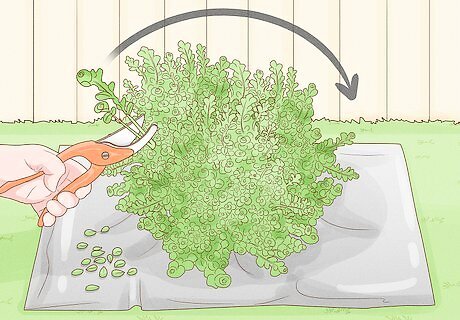
Trimming systematically keeps the piles of debris neatly behind you. Start pruning at 1 end of your hedgerow and work your way down the row, letting the debris fall onto the tarps below you. Be careful not to kick piles of trimmings off the tarps onto your lawn or garden beds. If any branches or trimmings get caught in the hedges as you work, just brush or pull them out as you go and drop them onto the tarps below.
Clean off the tops of hedges with a rake.

A rake works great to remove any trimmings stuck on top of your hedges. Rake along the top of the hedge, working your way from 1 end to the other. Let debris fall down on the ground or onto tarps below the hedge, where it’s easier to gather up for disposal. Alternatively, use a leaf blower to blow branches and leaves off the tops of the hedges.
Rake and pile loose debris into a tarp.
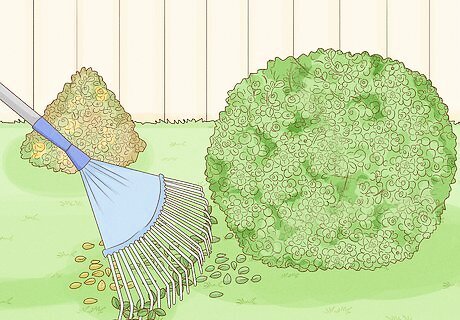
If you didn’t put tarps under your hedges, you can still use one for cleanup. Lay a tarp out near your hedges and rake trimmings into piles beside it. Grab the piles of debris and place them in the middle. Move the tarp as needed until you clean up the majority of the trimmings.
Fold trimmings up in tarps.

This makes them easy to transport without spilling any. So this whether or not you trimmed your hedges with tarps underneath them or transferred the trimmings to a tarp after you finished. Carefully fold each tarp up a few times to bundle the debris inside. For longer sections of tarp, you can roll them up from 1 end with the leaves inside. Fold the ends up when you’re done rolling to keep the leaves from spilling out.
Dump the debris out into a wheelbarrow.

Then you can move all the trimmings together easily. Carry each bundled tarp 1 at a time over to a nearby wheelbarrow. Unfold the tarps over the wheelbarrow and pour the pruning debris into it. Alternatively, if you have a rolling yard waste bin, you can move it over to where you’re working and just dump the leaves out directly into it.
Pick up any debris right under the hedges by hand.
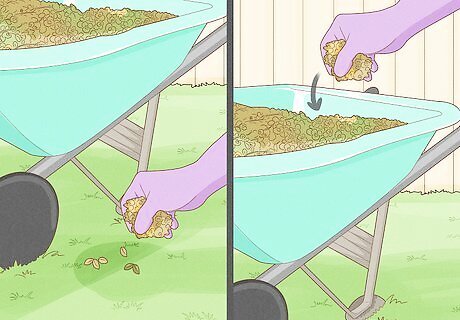
There are bound to be some loose trimmings under the hedges. Check underneath your hedges for loose leaves and branches. Pick them up with your gloved hands and toss them into your wheelbarrow or a yard waste bag. You can also use a rake to clean loose trimmings out of the dirt or mulch below your hedges.
Rake loose leaves into rows.

Rows of leaves are easier to clean up than piles. After you trim any leafy hedges, rake any leaves that found their way onto your lawn or into your garden beds into neat rows. Then, grab manageable groups of leaves and bag them up or put them in your wheelbarrow to dispose of them.
Dispose of yard waste in the proper bin.
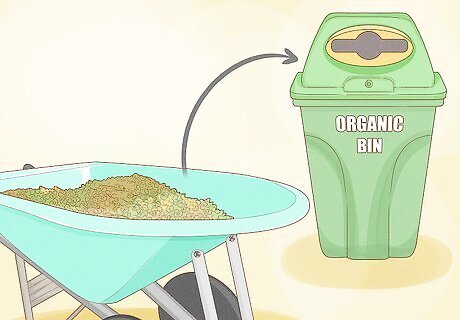
Most municipalities provide a yard waste or organic bin. Transfer all your hedge trimmings into the appropriate bin when you’re done cleaning them up. Put your bin out by the curb on collection day for the city to come by and pick up your yard waste. Spoiler: the bin is usually green! However, if you don’t have a yard waste bin, check your municipality’s website for yard waste disposal instructions. Some places let you leave neat piles or bags of trimmings out by the curb.
Fertilize your hedges after trimming.

Hedges benefit from an annual fertilizer treatment. Provide your hedges with a balanced 10-10-10 commercial fertilizer after you prune them, especially if you prune in early spring. Now you’re all done with trimming and fertilizing for another year! Alternatively, you could put down a fresh layer of mulch below your hedges.
















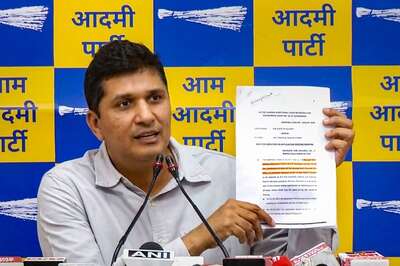



Comments
0 comment